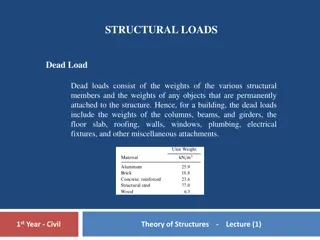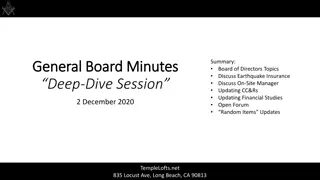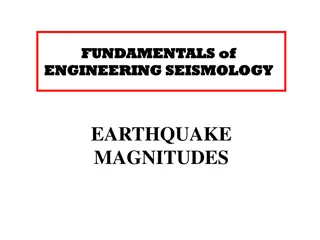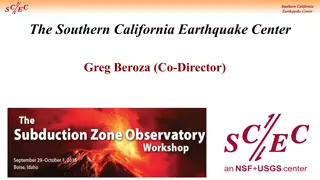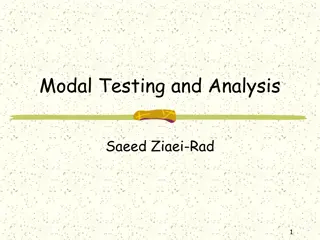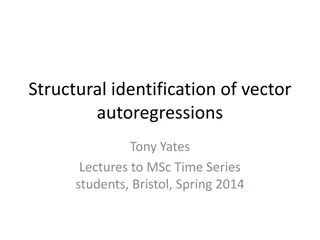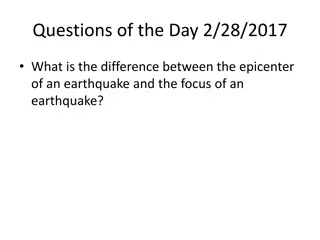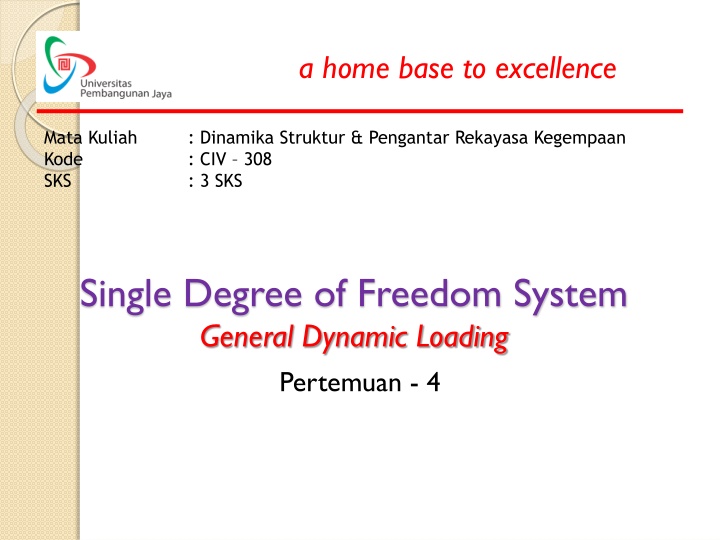
Introduction to Structural Dynamics & Earthquake Engineering
The principles of single degree of freedom systems, dynamic loading, and response analysis in structural dynamics and earthquake engineering. Learn about Duhamel's Integral, response to step forces, step force with finite rise time, and applications through examples. Enhance your understanding of dynamic behavior and solve technical problems using mathematical models."
Uploaded on | 1 Views
Download Presentation

Please find below an Image/Link to download the presentation.
The content on the website is provided AS IS for your information and personal use only. It may not be sold, licensed, or shared on other websites without obtaining consent from the author. If you encounter any issues during the download, it is possible that the publisher has removed the file from their server.
You are allowed to download the files provided on this website for personal or commercial use, subject to the condition that they are used lawfully. All files are the property of their respective owners.
The content on the website is provided AS IS for your information and personal use only. It may not be sold, licensed, or shared on other websites without obtaining consent from the author.
E N D
Presentation Transcript
a home base to excellence Mata Kuliah Kode SKS : Dinamika Struktur & Pengantar Rekayasa Kegempaan : CIV 308 : 3 SKS Single Degree of Freedom System General Dynamic Loading Pertemuan - 4
a home base to excellence TIU : Mahasiswa dapat menjelaskan tentang teori dinamika struktur. Mahasiswa dapat membuat model matematik dari masalah teknis yang ada serta mencari solusinya. TIK : Mahasiswa mampu menghitung respon sistem struktur sederhana akibat beban luar sembarang
a home base to excellence Sub Pokok Bahasan : Eksitasi Sembarang
a home base to excellence Duhamel s Integral Undamped System An impulsive loading is a load which is applied during a short duration of time. The corresponding impulse of this type of load is defined as the product of the force and the time of its duration. Using Duhamel s Integral, the displacement response at time t due to continuous F( ) is : F( ) t 1 F( ) d ( ) t ( ) ( ) 0 = (1) u F sin t d n m n t + d
a home base to excellence Response to Step Forces p(t) p(t) po u(t) p(t) = po m p ( ) o = u t st 0 k k SDoF System Without Damping Maximum displacement : ( )o 2 t = ( ) ( t ) ( o ) ( = ) 2 u u (2) = 1 1 u u cos t u cos o st st n st o T n SDoF System With Damping ( ) ( t ) (3) = + t 1 u u e cos t sin t n st D D o 2 1
a home base to excellence Response to Step Force With Finite Rise Time p(t) ( ) t t p t / t t t ( ) t p(t) = p o r r po p u(t) o r Maximum displacement : m t If tr< Tn/4 : uo 2(ust)o If tr> 3Tn: uo 2(ust)o If tr/Tn= 1,2,3, uo = (ust)o k tr sin t t ( ) ( t ) (4) For t < tr = n u u st o t t r n r (5) 1 ( ) ( t ) ( ) = For t > tr 1 u u sin t sin t t st n n r o t n r
a home base to excellence Example The elevated water tank in Fig weighs 45,5 tons when full with water. The tower has a lateral stiffness of 145 kg/mm. Treating the water tower as an SDoF system, estimate the maximum lateral displacement due to each of the two dynamic forces shown without any exact dynamic analysis. Neglect damping. P(t) W k P(t) 25 tons t (dt) 0,2 P(t) 25 tons t (dt) 4
a home base to excellence Response to Pulse Excitations We next consider an important class of excitations that consist of essentially a single pulse Air pressure generated on a structure due to aboveground blasts or explosions is an example of pulse force. Force Time
a home base to excellence Response to Rectangular Pulse Force p(t) p(t) po t p t t u(t) ( ) t = p o d 0 t m d t k td ( ) t 2 u t For t < td (6) = = 1 1 cos t cos ( ) n u T st n o ( ) t u ( ) = For t > td cos t t cos t (7) ( ) n d n u st o
a home base to excellence Response to Rectangular Pulse Force The maximum deformation is : p ( ) = = (8) o u u R R o st d d o k With deformation response factor : = 2 t 2 for 1 2 d sin t T (9) d n R T d n for 1 2 t T d n The maximum value of the equivalent static force is : = = f ku p R (10) So o o d
a home base to excellence Example A one-story, idealized as a 3,6 m high frame with two columns hinged at the base and a rigid beam, has a natural period of 0,5 sec. Each column is a wide-flange steel section W8x18. Its properties for bending about its major axis are Ix = 2,570 cm4, S = Ix/c = 249 cm3; E = 200 GPa. Neglecting damping, determine the maximum response of this frame due to a rectangular pulse force of amplitude 1,800 kgf and duration td = 0,2 sec. The response quantities of interest are displacement at the top of the frame and maximum bending stress in the column.
a home base to excellence Response to Half Cycle Sine Pulse Force p(t) ( ) t p(t) sin p t/t t t ( ) t = p o d d po u(t) 0 t d m t k td ( ) t 1 T 2 u t t = 2 n sin sin For t < td ( ) ( ) 2 u t t T 1 2 T t st d d n o n d For td/Tn ( ) ( ) ( ) t 1 T t cos 2 t / 1 T t u t = For t > td 2 n d d n d sin ( ) ( ) 2 2 u T T T t st n n o n d
a home base to excellence For td/Tn= ( ) t 2 2 2 1 u t t t For t < td = sin cos ( ) 2 u T T T st n n n o ( ) t 1 u t For t > td = 2 cos ( ) 2 2 u T st n o
a home base to excellence Response to Symmetrical Triangular Pulse Force p(t) p(t) po u(t) m t k td td/2




